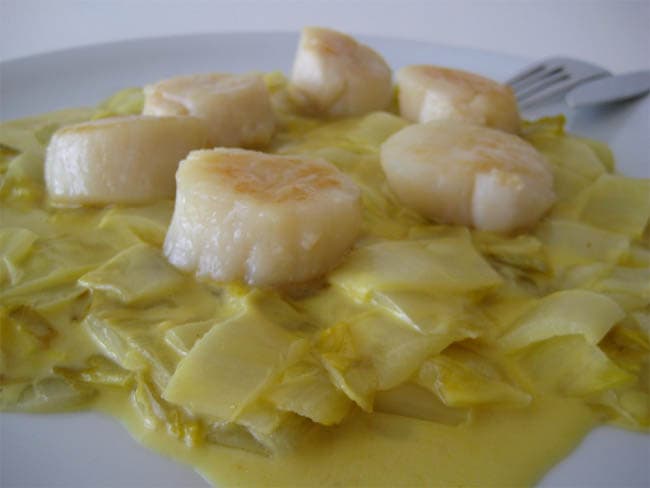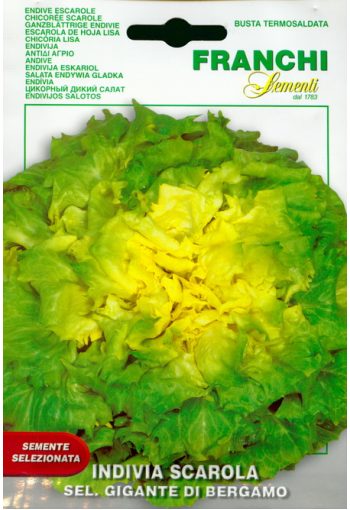Ex Tax: 1.14€
A medium-late variety. Grown outdoors and in greenhouses. This is a very valuable vegetable, assisting to reduce the amount of sugar in the blood. Intibin, a substance giving bitter flavour, improves digestion and blood circulation. 1,0 g contains approximately 580-600 seeds.
Agricultural technology is similar to the cultivation of ordinary lettuce.
Endive is interesting because it supplies the table with excellent salad greens in the autumn-winter period when the supply of ordinary green vegetables is running out.
To remove piquant bitterness, green leaves are boiled or kept in salt water for 20 minutes, washed, drained and used for salads, side dishes, soups, stews, etc. The most important biological feature of the endive is the rapid formation of a large rosette of leaves. In a short time, a powerful rosette weighing 300-400 g or more develops.
Endive leaves are elongated and deeply dissected with strongly curly edges. The colour of the leaves, depending on the variety, varies from yellowish green to dark green.
The root of the plant is small, woody-branched. With the onset of long days and elevated temperatures, plants quickly form erect and branched flower shoots with inflorescences consisting of numerous small flowers of lilac colour.
Surprisingly, this southern plant has exceptional cold resistance. At an early age, it tolerates frosts down to minus 4-6 ° C, which is very important when using it directly from the garden in late autumn. In fact, it can be taken from the garden until the snow cover.
In order to have a fresh salad in late autumn, sowing is carried out in summer, and in autumn the plants are harvested with roots in a greenhouse, which, with the onset of cold weather, is covered with frames and mats.
For winter consumption of lettuce, plants are added dropwise to wet sand in storage. With good ventilation, they remain there for several months.
In winter, endive and escarole can be grown in greenhouses using the same farming techniques as for head lettuce.
The leaves of young (in the rosette phase) plants are used for food, more often as a salad, less often boiled, or stewed, they also decorate various dishes.
The use of chicory salads improves the activity of the digestive organs and the circulatory system.
Fresh, coarsely chopped leaves are eaten, seasoned with vegetable oil, vinegar or lemon juice with sugar and salt to taste and sprinkled with parsley.
At the same time, 2 tablespoons of oil and 1 tablespoon of vinegar are taken for 500 g of leaves.
Stew endive and escarole over low heat for 30 minutes (750 g of chopped leaves and 60 g of butter, salt to taste), and pour over lemon juice before serving.

Eng.: Endive. Suom.: Kähäräendiivi, "frisee" sikurisalaatti. Sven.: Friseesallat (cikoriasallat). Bot.: Cichorium endivia L.











